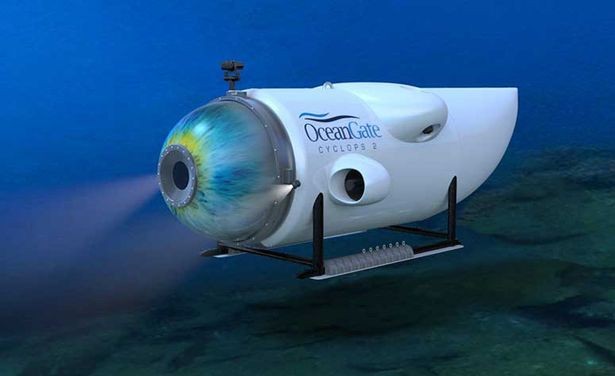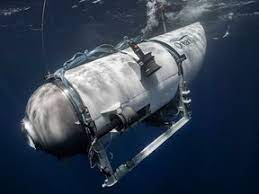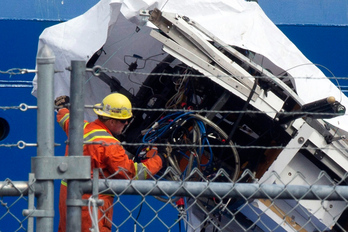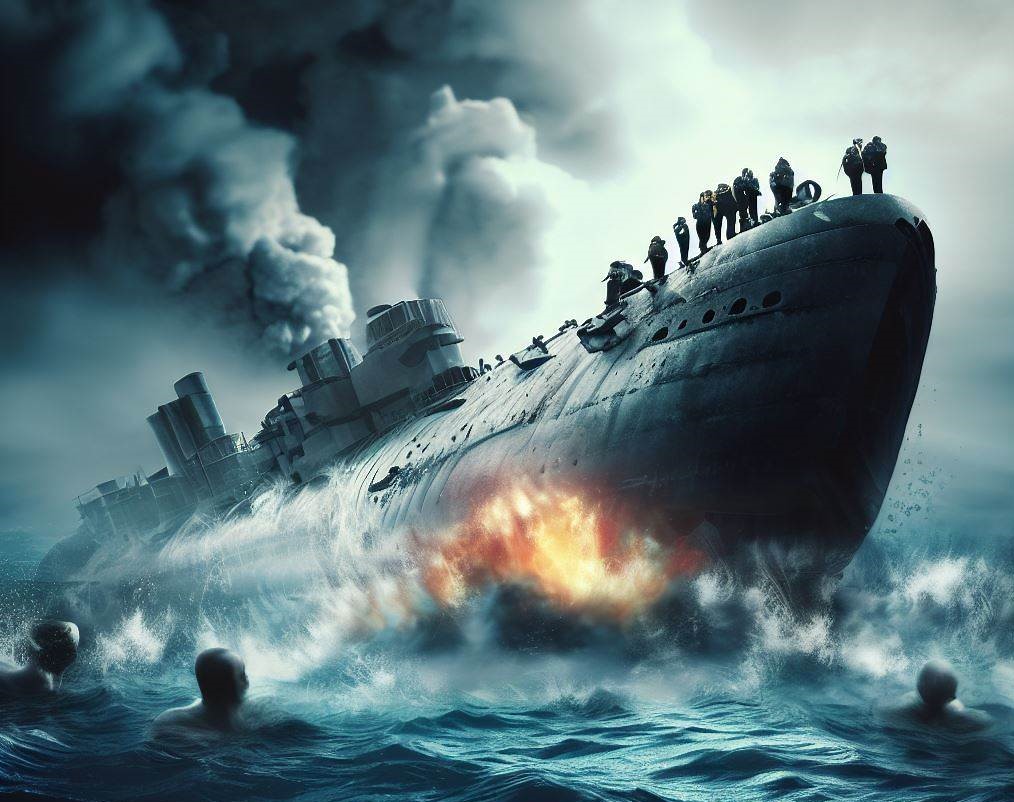On 18 June 2023, a deep-sea adventure turned into a nightmare when the Titan submersible imploded during a descent to the Titanic wreck, killing all five people on board. The Titan was operated by OceanGate, an American company that offered expeditions to the site of the world’s most famous shipwreck. The Titanic was a British ocean liner that sank in the North Atlantic Ocean on 15 April 1912, after colliding with an iceberg. More than 1,500 people died, making it the deadliest sinking of a single ship at the time.
The Titan was a state-of-the-art submersible that could carry up to five passengers and dive to depths of 4,000 meters (13,123 feet). It had a carbon fiber hull, a titanium frame and a large acrylic dome that offered panoramic views of the underwater world. It was equipped with cameras, lights, sonar and communication systems. It had completed more than 50 dives to the Titanic since 2019.
The crew of the Titan on the fatal dive consisted of Stockton Rush, the CEO and founder of OceanGate; Shahzada Dawood and his son Suleman Dawood, Pakistani businessmen and philanthropists; Hamish Harding, a British adventurer and record-breaker; and Paul-Henri Nargeolet, a French marine archaeologist and Titanic expert.

The Titan departed from St. John’s, Newfoundland, on board the Horizon Arctic, a support vessel that carried the submersible and its launch platform. The expedition was part of OceanGate’s Titanic Survey Expedition 2023, a scientific and educational mission that aimed to document and preserve the Titanic wreck site.
On Sunday, 18 June, the Titan began its descent to the Titanic at around 10:00 local time (13:00 GMT). It was expected to reach the wreck site in about two hours and spend about three hours exploring it. The Horizon Arctic maintained contact with the submersible through an acoustic link that transmitted data and voice messages. The last communication from the Titan was at 11:34 local time (14:34 GMT), when it reported that it was at a depth of 3,500 meters (11,483 feet) and everything was normal.
A few minutes later, the Horizon Arctic lost contact with the Titan. The support vessel tried to re-establish communication with the submersible, but received no response. It also tried to locate the submersible using its transponder signal, but detected nothing. The Horizon Arctic alerted the Canadian Coast Guard and requested assistance in searching for the missing submersible.

A massive search and rescue operation was launched, involving Canadian, American and British authorities and assets. The US Navy deployed two P-8 Poseidon aircraft equipped with sonobuoys that could detect underwater sounds. The Royal Canadian Navy sent two ships, HMCS Halifax and HMCS Glace Bay, with divers and remotely operated vehicles (ROVs). The UK Maritime and Coastguard Agency provided satellite imagery and analysis. Several private companies also offered their help, including James Cameron’s Earthship Productions, which provided its Deepsea Challenger submersible.
The search operation faced many challenges, such as rough weather conditions, limited visibility, strong currents and vast distances. The search area covered more than 100 square kilometers (38 square miles) around the Titanic wreck site. The depth of the ocean floor ranged from 3,800 meters (12,467 feet) to 4,200 meters (13,780 feet). The water pressure at those depths was more than 300 times greater than at sea level.
For four days, the search teams scoured the ocean floor for any signs of the Titan or its crew. They deployed sonobuoys to listen for any sounds from the submersible or its emergency beacon. They used ROVs to scan the seabed for any debris or anomalies. They analyzed satellite images for any surface clues or oil slicks. They hoped to find the Titan intact or at least recoverable.
On Thursday, 22 June, their hopes were dashed when an ROV from the Horizon Arctic discovered a debris field approximately 1,600 feet from the bow of the Titanic. The debris consisted of five pieces that were identified as parts of the Titan submersible: its nose cone, its tail cone, its pressure chamber and two propellers. The debris was scattered over an area of about 300 meters (984 feet) in diameter.

The US Coast Guard confirmed that the debris was consistent with a catastrophic implosion of the submersible’s hull. An implosion is a violent collapse inward caused by extreme pressure difference between inside and outside of a vessel. The US Navy revealed that it had detected a sound consistent with an implosion or explosion shortly after the Titan lost contact on Sunday. The sound was recorded by a sonobuoy that was dropped by a P-8 Poseidon aircraft. The sound was so loud that it could be heard by hydrophones hundreds of miles away.
The implosion of the Titan was so powerful that it instantly killed all five people on board and destroyed the submersible beyond recognition. The implosion also ignited the air inside the submersible, creating an explosion that incinerated the human bodies and turned them to ash and dust. The implosion and explosion happened in less than a millisecond, or one thousandth of a second, leaving no time for any reaction or escape.
The cause of the implosion is still unknown, but experts suspect that it may have been related to the carbon fiber hull of the submersible. Carbon fiber is a strong and lightweight material that is used for building aircraft and racing cars. However, it is also susceptible to cracks and flaws that may compromise its integrity under high pressure. The Titan had a cylindrical shape, which was less optimal for distributing pressure evenly than a spherical shape. The Titan had also undergone more than 50 dives to the Titanic, which may have caused fatigue or damage to the hull over time.
OceanGate, the company that operated the Titan, released a statement expressing its grief and condolences for the loss of its crew. It said that it was cooperating with the authorities and conducting its own investigation into the incident. It also said that it was committed to continuing its mission of exploring and preserving the Titanic wreck site.
The incident has raised questions about the safety and regulation of deep-sea tourism and expeditions. The Titanic wreck site is a popular destination for wealthy adventurers and enthusiasts who are willing to pay tens of thousands of dollars for a once-in-a-lifetime experience. However, it is also a dangerous and fragile environment that requires special equipment, training and precautions. The Titanic wreck site is not protected by any international law or treaty, and there is no clear authority or oversight over the activities that take place there.
The incident has also sparked a debate about the ethics and impact of visiting the Titanic wreck site. Some argue that visiting the Titanic is a way of honoring its history and legacy, as well as advancing scientific and educational knowledge. Others contend that visiting the Titanic is a form of exploitation and desecration, as well as a threat to its preservation and integrity. The Titanic wreck site is considered by many to be a mass grave and a cultural heritage site that should be respected and protected.
The incident has also reminded the world of the enduring fascination and tragedy of the Titanic story. The Titanic was not only a ship, but also a symbol of human ambition, achievement, hubris and folly. The Titanic was not only a disaster, but also a drama, a mystery, a legend and a legacy. The Titanic was not only a past, but also a present and a future.

